Neutron Imaging Facilities in a Global Context
Abstract
:1. Introduction
2. Neutron Imaging Facility Layout
- Homogeneous (in space) beam of well thermalized or cold neutrons fitting to the sample and detector size; imaging with fast neutrons is practiced in only few cases.
- Collimation in the order of the spatial resolution of the detection system: L/D > 250 as a minimum (L = collimation length; D = inlet aperture).
- Low background from gamma radiation and fast neutrons
- Intensity as high as possible fitting to the shielding performance with options for downgrading by pinholes or collimators
- Options for energy selection and beam limitation
- Enough space at the detector position for samples and experimental infrastructure
- Access control and radiation protection
2.1. Detection Systems
2.2. Facility Components
2.3. Beam Properties
2.4. Manpower and Qulification
3. Research Reactor Data Base (RR DB)
3.1. Overview about Operational Research Reactors
3.2. Research Reactors Utilization
4. ISNR
5. Methodical Options and Development
6. Conclusions and Outlook
Acknowledgments
Conflicts of Interest
References
- Kallmann, H. Neutron radiography. Research 1947, 1, 254–260. [Google Scholar] [CrossRef]
- Peter, O. Neutronen-Durchleuchtung. Z. Naturforschung 1946, 1, 557–559. [Google Scholar]
- Hawkesworth, M.R.; Walker, J. Review: Radiography with Neutrons. J. Mater. Sci. 1969, 4, 817–835. [Google Scholar] [CrossRef]
- Domanus, J.C. Research and Standardization Activities of the Euratom. Neutron Radiography Working Group; RISØ-M-2524; Risø National Laboratory: Roskilde, Denmark, 1985. [Google Scholar]
- Parameters. Available online: https://www.psi.ch/sinq/neutra/parameters (accessed on 21 November 2017).
- Cold Neutron Radiography and Tomography Facility. Available online: http://www.mlz-garching.de/antares (accessed on 21 November 2017).
- Kardjilov, N.; Hilger, A.; Manke, I.; Strobl, M.; Dawson, M.; Williams, S.; Banhart, J. Neutron tomography instrument CONRAD at HZB. Nucl. Instrum. Methods Phys. Res. Sect. A Accel. Spectrom. Detect. Assoc. Equip. 2011, 651, 47–52. [Google Scholar] [CrossRef]
- Neutron Imaging Facility. Available online: https://physics.nist.gov/MajResFac/NIF/facility.html (accessed on 21 November 2017).
- Morgano, M.; Peetermans, S.; Lehmann, E.H.; Panzner, T.; Filges, U. Neutron imaging options at the BOA beamline at Paul Scherrer Institut. Nucl. Instrum. Methods Phys. Res. Sect. A Accel. Spectrom. Detect. Assoc. Equip. 2014, 754, 46–56. [Google Scholar] [CrossRef]
- TOMCAT-X02DA: Tomographic Microscopy. Available online: https://www.psi.ch/sls/tomcat/tomcat (accessed on 21 November 2017).
- Lehmann, E.H.; Tremsin, A.; Grünzweig, C.; Johnson, I.; Boillat, P.; Josic, L. Neutron imaging—Detector options in progress. J. Instrum. 2011, 6, C01050. [Google Scholar] [CrossRef]
- Tremsin, A.S.; Vallerga, J.V.; McPhate, J.B.; Siegmund, O.H.W. Optimization of Timepix count rate capabilities for the applications with a periodic input signal. J. Instrum. 2014, 9, C05026. [Google Scholar] [CrossRef]
- Hassanein, R.; Lehmann, E.; Vontobel, P. Methods of scattering corrections for quantitative neutron radiography. Nucl. Instrum. Methods Phys. Res. Sect. A Accel. Spectrom. Detect. Assoc. Equip. 2005, 542, 353–360. [Google Scholar] [CrossRef]
- Kockelmann, W.; Frei, G.; Lehmann, E.H.; Vontobel, P.; Santisteban, J.R. Energy selective neutron transmission imaging at a pulsed source. Nucl. Instrum. Methods Phys. Res. Sect. A Accel. Spectrom. Detect. Assoc. Equip. 2007, 578, 421–434. [Google Scholar] [CrossRef]
- Research Reactor Data Base. Available online: https://nucleus.iaea.org/RRDB/RR/ (accessed on 21 November 2017).
- MuhRec—A Tool Suite for CT Reconstruction and Data Processing/Analysis for Neutron Imaging. Available online: http://www.isnr.de/ (accessed on 21 November 2017).
- WCNR10. 10th World Conference on Neutron Radiofraphy, Grindelwald, Switzerland, 5–10 October 2014. Available online: http://www.psi.ch/wcnr10 (accessed on 21 November 2017).
- ITMNR-8. 8th International Topical Meeting on Neutron Radiography (ITMNR-8), Beijing, China, 4–8 September 2016. Available online: https://www.isnr.de/index.php/information/events/itmnr/itmnr-8 (accessed on 21 November 2017).
- High Brilliance Neutron Source. Available online: http://www.fz-juelich.de/jcns/EN/Leistungen/High-Brilliance-Neutron-Source/_node.html (accessed on 21 November 2017).
- Union for Compact Accelerator-driven Neutron Sources (UCANS). Available online: http://www.ucans.org/ (accessed on 21 November 2017).
- Pfeiffer, F.; Grünzweig, C.; Bunk, O.; Frei, G.; Lehmann, E.; David, C. Neutron Phase Imaging and Tomography. Phys. Rev. Lett. 2006, 96, 215505, Erratum in Phys. Rev. Lett. 2006, 97, 069905. [Google Scholar] [CrossRef] [PubMed]
- Grünzweig, C.; David, C.; Bunk, O.; Kohlbrecher, J.; Lehmann, E.; Lai, Y.W.; Schäfer, R.; Roth, S.; Lejcek, P.; Kopecek, J.; et al. Visualizing the propagation of volume magnetization in bulk ferromagnetic materials by neutron grating interferometry. J. Appl. Phys. 2010, 107, 09D308. [Google Scholar] [CrossRef]
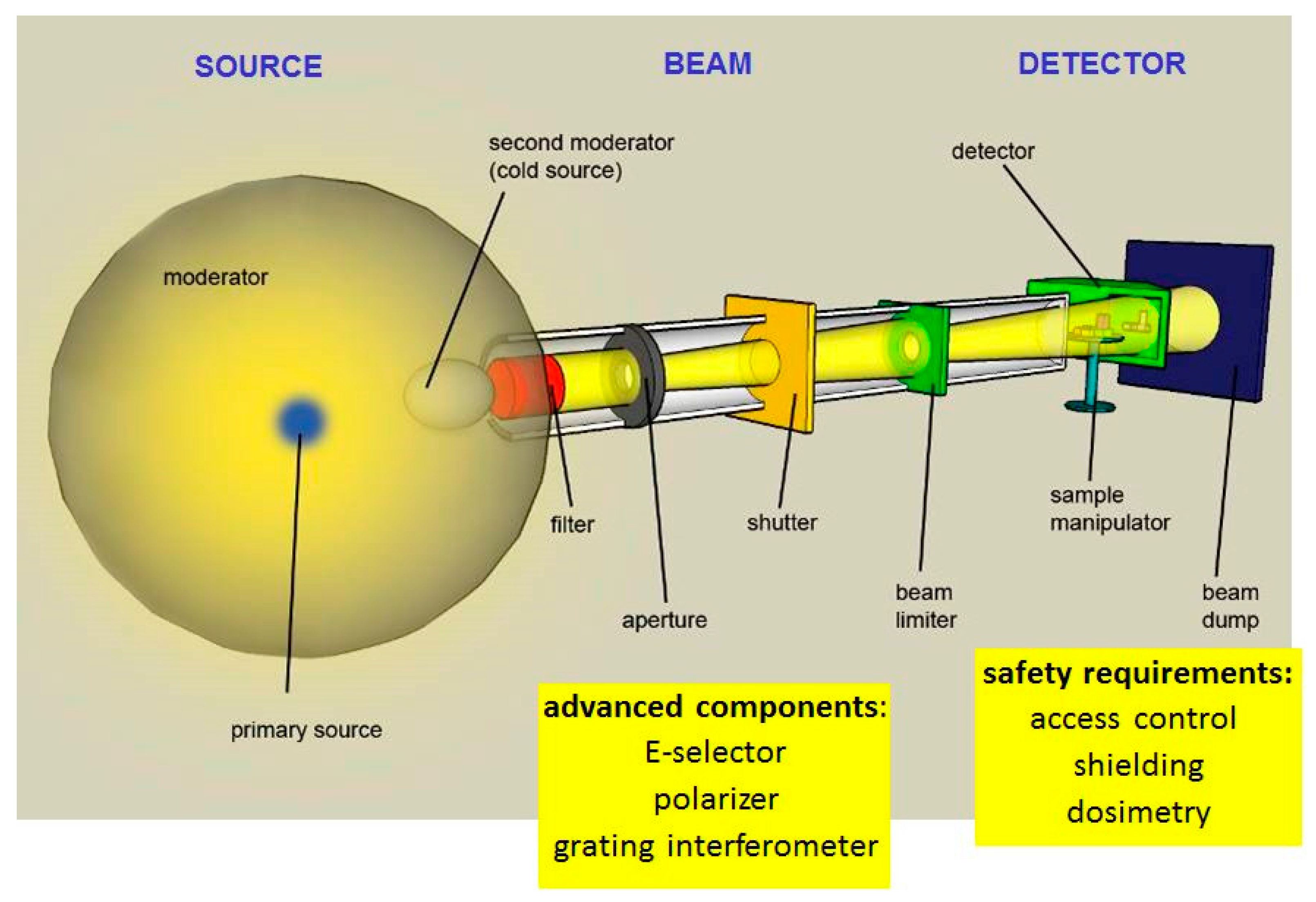
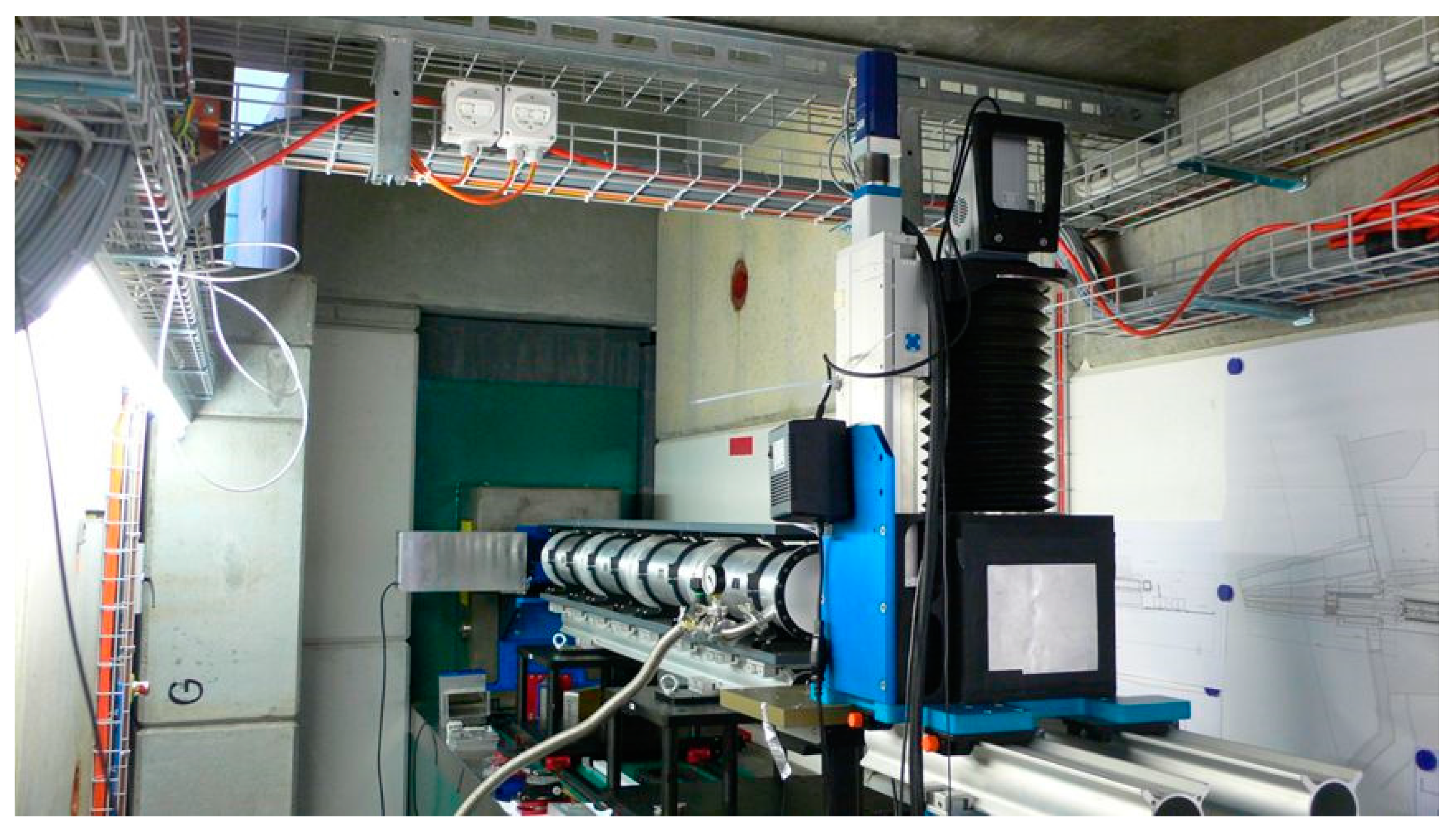
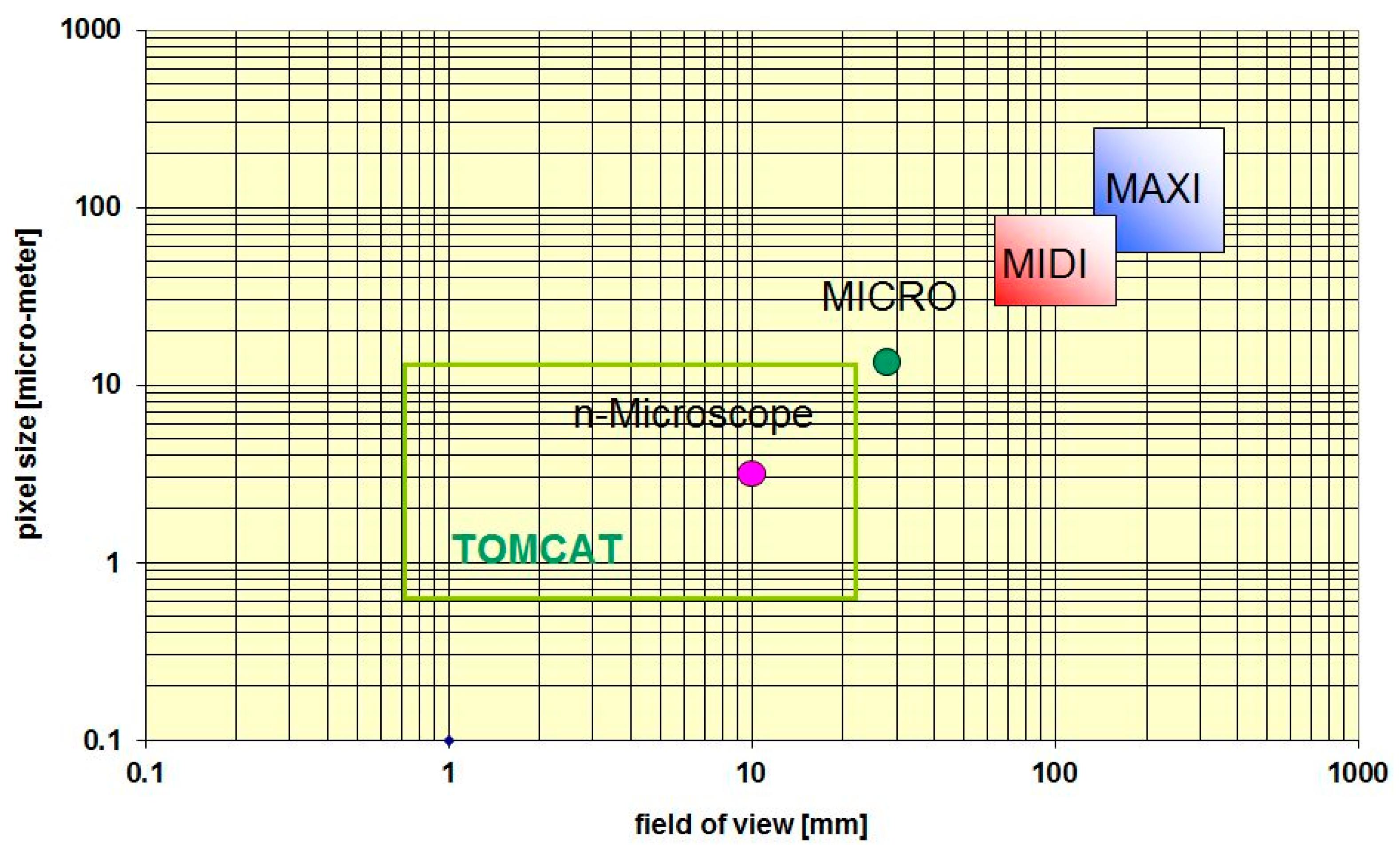
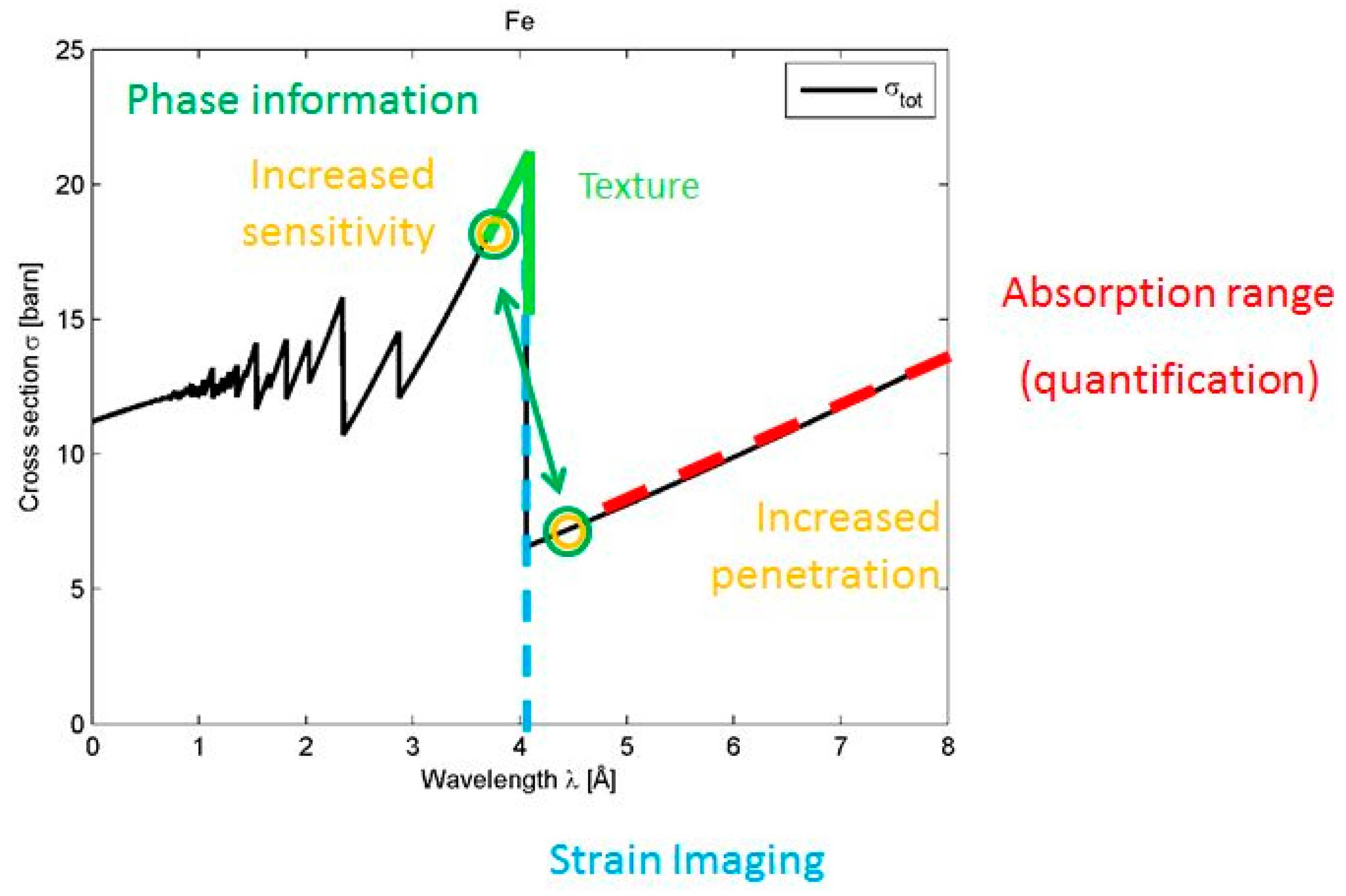
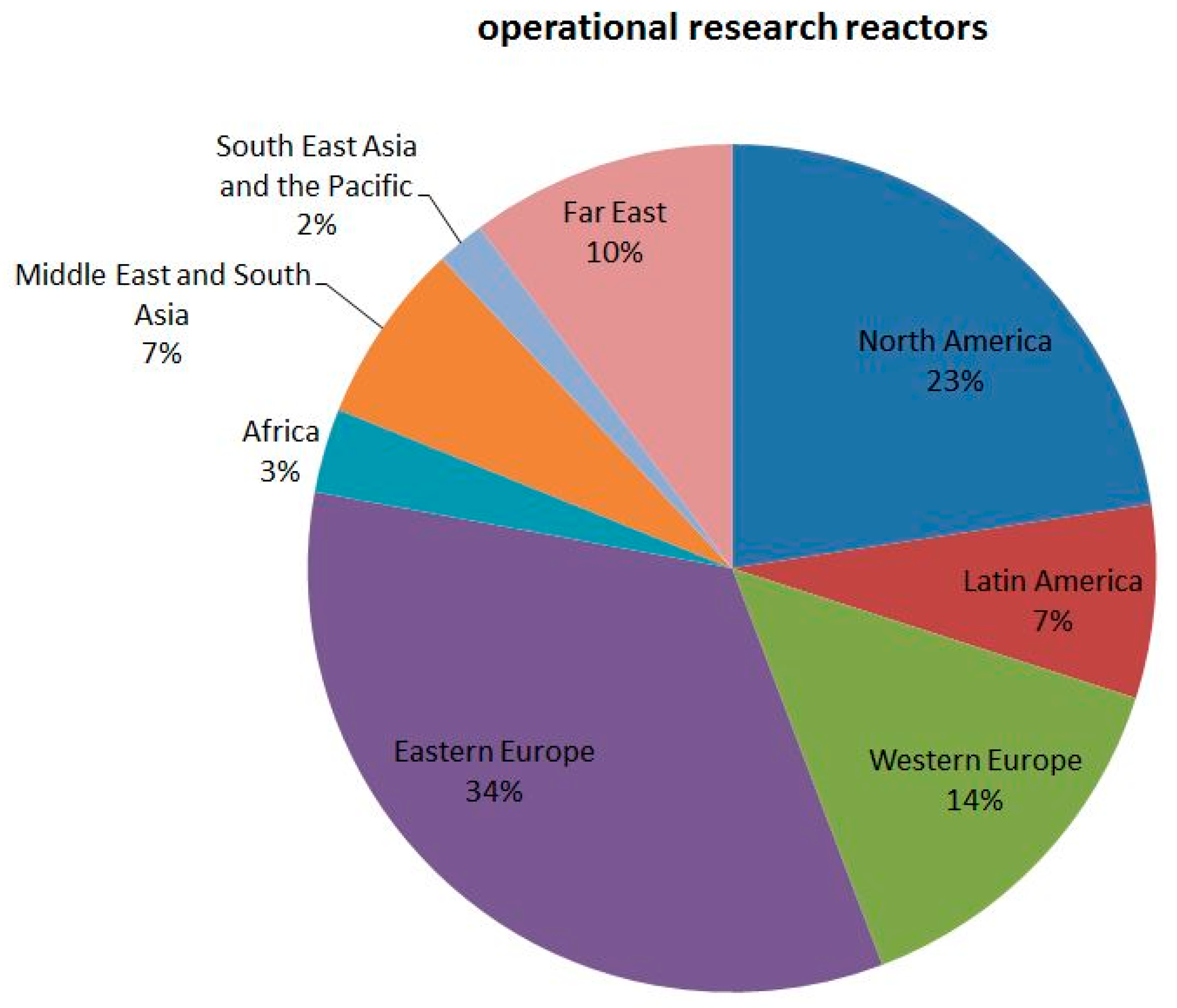
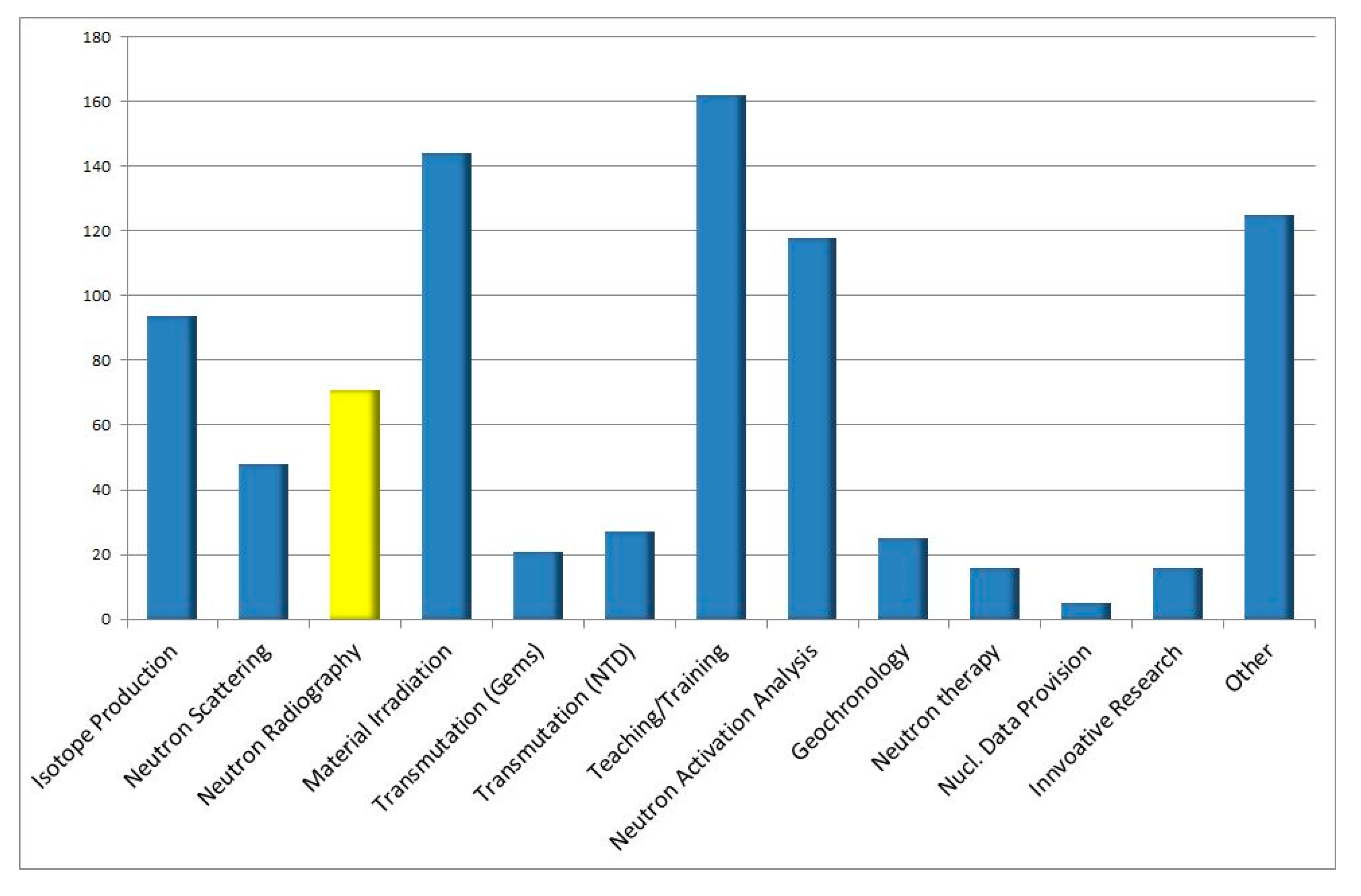
| Name | Source | Country | Status | Oper. Mode | Readiness |
|---|---|---|---|---|---|
| NEUTRA | SINQ | CH | user operation | continuous | 1997 |
| ICON | SINQ | CH | user operation | continuous | 2008 |
| BOA | SINQ | CH | Shared operation | continuous | 2013 |
| RADEN | JPARC | Japan | user operation | pulsed | 2015 |
| IMAT | ISIS-TS2 | UK | Facility test | pulsed | 2016 |
| VENUS | SNS | USA | project | pulsed | 2020? |
| ODIN | ESS | Europe | project | pulsed | 2019? |
| Status | Developed Countries | Developing Countries | All Countries |
|---|---|---|---|
| Planned | 3 | 8 | 11 |
| Under construction | 4 | 4 | 8 |
| Operational | 135 | 82 | 217 |
| Temporary shutdown | 11 | 10 | 21 |
| Extended shutdown | 5 | 4 | 9 |
| Permanent shutdown | 103 | 19 | 122 |
| Under decommissioning | 19 | 1 | 20 |
| Decommissioned | 335 | 25 | 360 |
| Cancelled | 11 | 4 | 15 |
| Total | 626 | 157 | 783 |
| Mode | Number | Option |
|---|---|---|
| operational | 217 | |
| under construction | 8 | |
| planned | 11 | |
| power | 68 | between 1 kW and 1 MW |
| power | 48 | more than 1 MW |
| power | 63 | below 1 kW |
| utilization rate high | 42 | |
| age < 40 years | 93 | |
| age < 40 years | 143 |
| Country | Site | Institution | Facility | Neutron Source | Spectrum | Power (MW) | Status |
|---|---|---|---|---|---|---|---|
| Australia | Sydney | ANS TO | DINGO | OPAL reactor | thermal | 20 | operational |
| Germany | Munich-Garching | TU Munich | ANTARES | FRM-2 reactor | cold | 25 | operational |
| Germany | Munich-Garching | TU Munich | NECTAR | FRM-2 reactor | fast | 25 | operational |
| Germany | Berlin | HZB | CONRAD | BER-2 reactor | cold | 10 | operational |
| Hungary | Budapest | KFKI | NORMA | WWS-M reactor | cold | 10 | operational |
| Hungary | Budapest | KFKI | NRAD | WWS-M reactor | thermal | 10 | operational |
| Japan | Kyoto | Kyoto University | imaging beamline | MTR reactor | thermal | 5 | standby |
| Japan | Tokai | JAEA | imaging beamline | JRR-3M reactor | thermal | 20 | standby |
| Japan | Tokai | JAEA | RADEN | JPARC spallation | cold | 0.5 | operational |
| Korea | Daejon | KAERI | imaging beamline | HANARO reactor | thermal | 30 | operational |
| Russia | Dubna | JINR | imaging beamline | IBR-2M pulsed reactor | thermal | 2 | operational |
| Switzerland | Villigen | PSI | NEUTRA | SINQ spallation | thermal | 1 | operational |
| Switzerland | Villigen | PSI | ICON | SINQ spallation | cold | 1 | operational |
| UK | Oxfordshire | Rutherford Lab | IMAT | ISIS spallation | cold | 0.3 | operational |
| USA | Gaithersburg | NIST | BT-2 | NBSR reactor | Thermal | 20 | operational |
| USA | Gaithersburg | NIST | NG-6 | NBSR reactor | Cold | 20 | operational |
| USA | Oak Ridge | ORNL | CG-1D | HFIR reactor | Cold | 85 | operational |
| South Africa | Pelindaba | NECSA | SANRAD | SAFA RI reactor | thermal | 20 | standby |
| Country | Source | Facility | Site | Status |
|---|---|---|---|---|
| Argentina | RA10 | ASTOR | Boe nos Aires | project |
| Czech Republic | LVR-15 | NI | Rez near Prague | considerations |
| PR China | CARR | 2 NI | Beijing | project |
| France | ORPHEE | IMAGINE | Saclay | operational |
| Europe | ILL | D50 | Grenoble | shared with reflectometer |
| Norway | JEEP-II | NIMRAD | Kjeller | upgrade project |
| Netherlands | Delft RR | FISH | Delft | project |
| Jordan | new reactor | NI | Jordan | “day one” project |
| South Africa | SAFARI | SANRAD-II | Pelindaba | upgrade project |
| Russia | IBR-2 | NI | Dubna | improvements |
| South Korea | HANARO RR | NI | Daejon | upgrade project |
© 2017 by the author. Licensee MDPI, Basel, Switzerland. This article is an open access article distributed under the terms and conditions of the Creative Commons Attribution (CC BY) license (http://creativecommons.org/licenses/by/4.0/).
Share and Cite
Lehmann, E.H. Neutron Imaging Facilities in a Global Context. J. Imaging 2017, 3, 52. https://doi.org/10.3390/jimaging3040052
Lehmann EH. Neutron Imaging Facilities in a Global Context. Journal of Imaging. 2017; 3(4):52. https://doi.org/10.3390/jimaging3040052
Chicago/Turabian StyleLehmann, Eberhard H. 2017. "Neutron Imaging Facilities in a Global Context" Journal of Imaging 3, no. 4: 52. https://doi.org/10.3390/jimaging3040052
APA StyleLehmann, E. H. (2017). Neutron Imaging Facilities in a Global Context. Journal of Imaging, 3(4), 52. https://doi.org/10.3390/jimaging3040052




